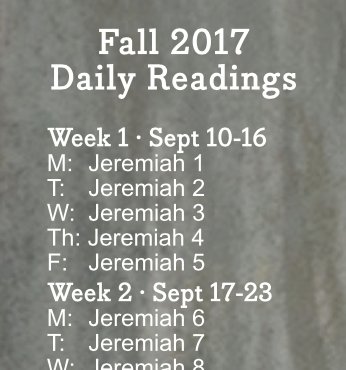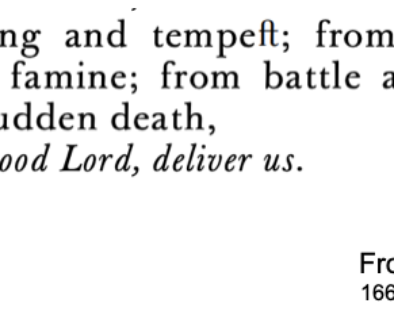Jeremiah: visibly incorporating the repair
Kintsugi is a Japanese method for repairing broken ceramics with a special lacquer mixed with gold, silver, or platinum. The philosophy behind the technique is to recognize the history of the object and to visibly incorporate the repair into the new piece instead of disguising it. The process usually results in something more beautiful than the original.
This fall we will take on the gargantuan task of metabolizing the book of Jeremiah. It is 52 chapters long and records the prophecies given by God over the reigns of 3 kings: Josiah, Jehoiakim, and Zedekiah. It begins in the latter half of the 7th Century BCE and closes with the destruction of Jerusalem and the exile of Judah in 587 BCE. It is a massive story.
Throughout the book, the prophet Jeremiah weeps. And this is why I chose it for this fall. He weeps because of the impossibility of his calling– to warn people of the certain consequences of their choices. He weeps because of the hardness of their hearts. He weeps because of the cruelty and pain that will be inflicted upon his family and friends. He weeps because God has been dismissed, compartmentalized, ignored, and used.
Jeremiah’s tears offer us a way to engage the broken and busted world that we see all around us. Tears– the evidence of grief and lament– are ‘the different way’ from the labels of ‘judgmental’ and ‘triumphal’ that so often get attached to those who profess to follow Jesus.
Jeremiah bravely looked at everything that was not the way its supposed to be and he mourned. (For those who mourn will be comforted.)
The book itself is a 52 chapter description of consequence: This is what will happen because of what you did. It is sober, honest, and candid. Jesus talked about the same things, but He would often come at it, ‘slant’.
He used parables.
The meanings of them are no less stark in their messages of separation, of hope, of rejection, and of grace. But parables, being story and metaphor, can slip behind our defenses and walls of self-righteousness. So we will look at one of Jesus’ parables from Matthew each week as well. I am interested in exploring the contrasts between God’s announcements of consequence through Jeremiah and God’s announcements of consequence through Jesus.
On Sunday, we will have a small gift for you. Amy Rowe, a church planter at Restoration, has created a beautiful book mark with a reading plan to help all of us work our way through Jeremiah this fall. I hope you will pick one up and use it each day. I know that God will use our reading of Jeremiah to deepen our relationship with Him… and each other.
…to visibly incorporate the repair into the new piece instead of disguising it.
The image of a pot shows up over and over in the prophecy of Jeremiah. When the pot is broken it is a metaphor of what we have done and what has been done to us. But when it is repaired… As followers of Jesus, we never need to hide our brokenness. For it is in the repair, the healing, the visible restoration, that our Rescuer and Deliverer gets the honor and praise He so completely deserves.
May God give us grace to join Jeremiah and Jesus in looking upon what is broken and weeping. And may God give us grace to rejoice in what has been healed and repaired. And may God give us grace to wait for it all to be completed.
-David


